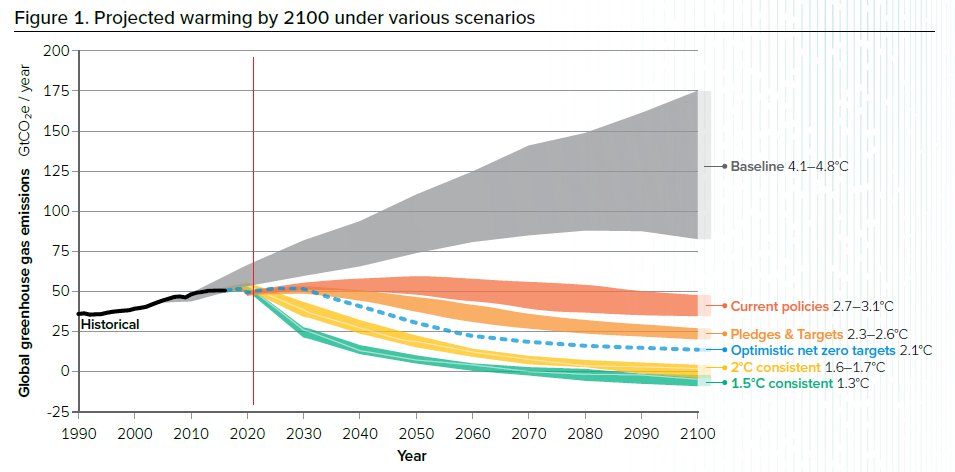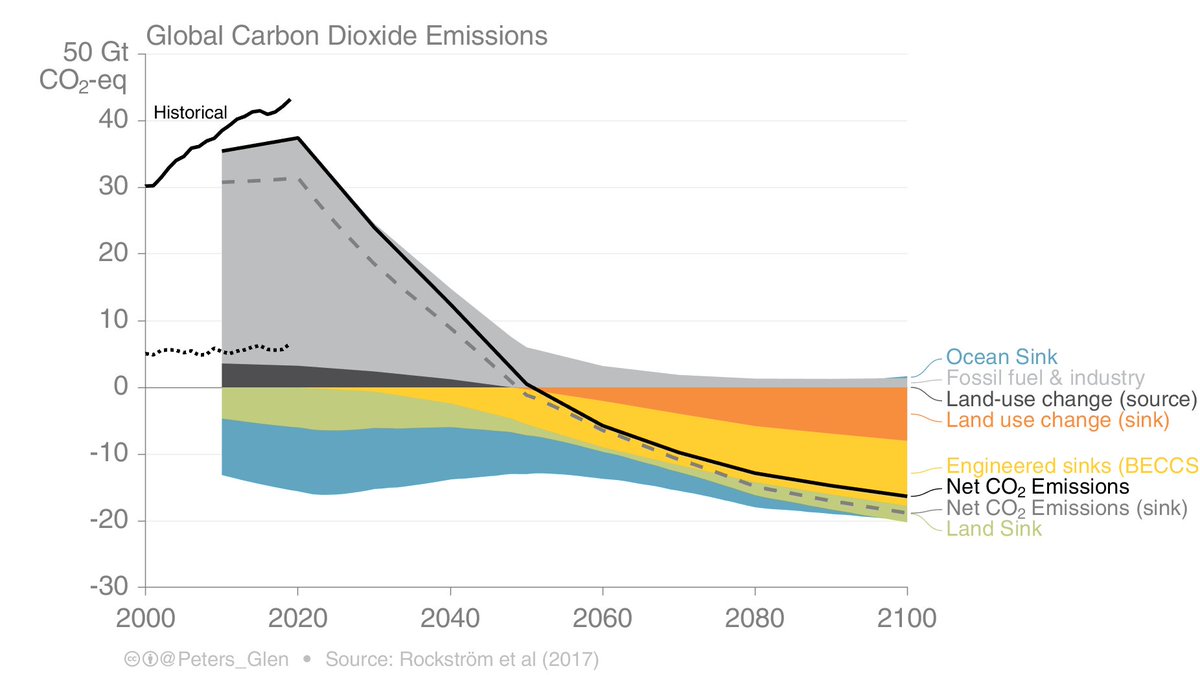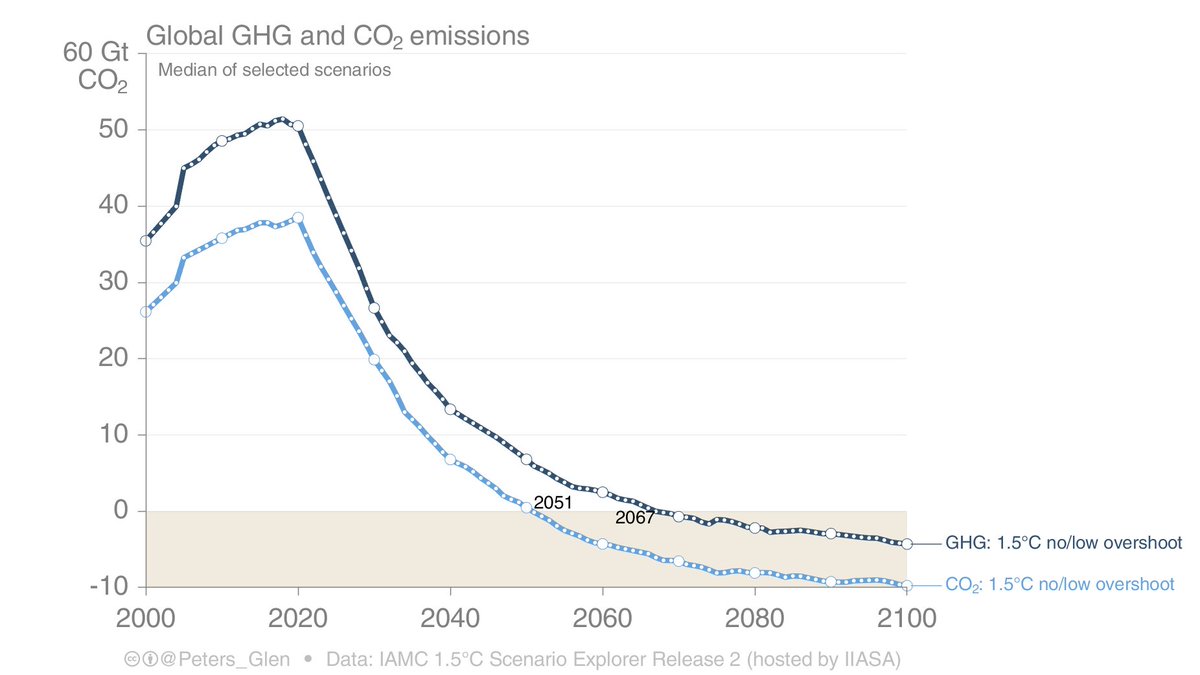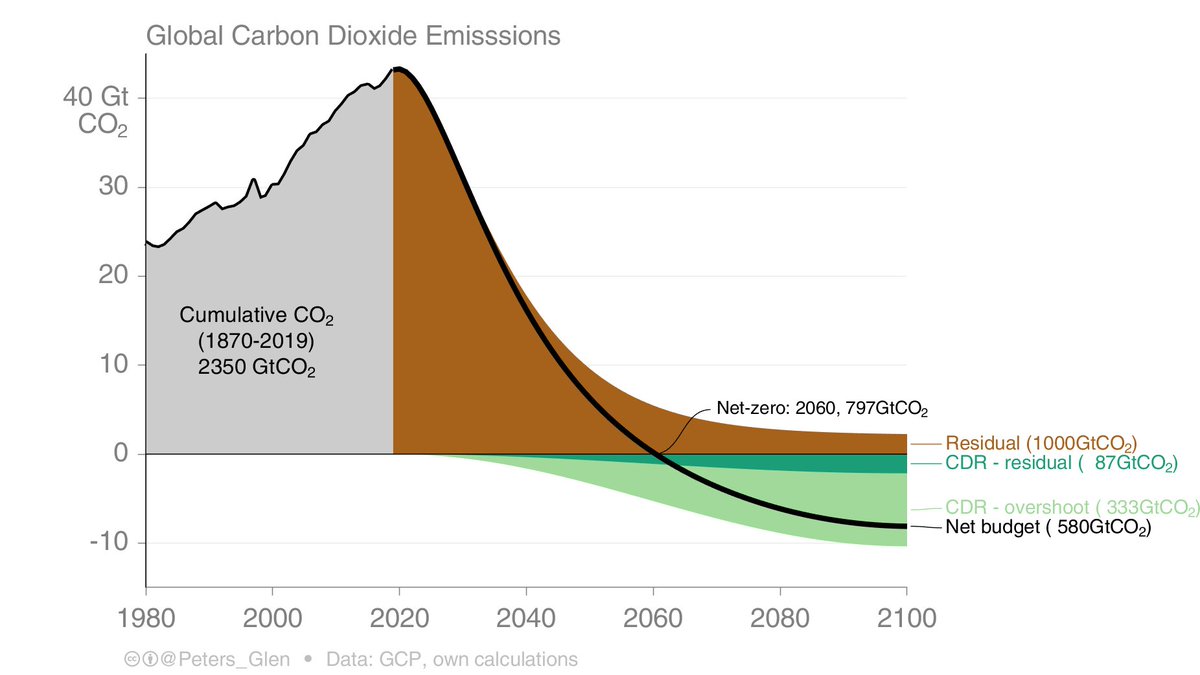
Most think the world will cross 1.5°C global warming between 2026-2030. This is quite defensible, as is 2031-2040.
Though, this all depends on the data set, & how the averaging is done.
1/
Though, this all depends on the data set, & how the averaging is done.
1/

IPCC SR15 has current (2017) warming at 1.0°C (running mean), & suggests 1.5°C would be exceeded in 2030-2052 at the current rate.
2/
2/

@hausfath has current (2020) warming at 1.2-1.4°C (not a running mean)
In an earlier analysis he suggested 1.5°C will be crossed around 2030-2032 (median)
carbonbrief.org/analysis-when-…
3/
https://twitter.com/hausfath/status/1366506449879277569?s=03
In an earlier analysis he suggested 1.5°C will be crossed around 2030-2032 (median)
carbonbrief.org/analysis-when-…
3/

It is worth noting that nearly all 1.5°C scenarios first exceed 1.5°C & then go back below 1.5°C (according to SR15).
Deep mitigation now means we will in any case very likely exceed 1.5°C, unless the climate behaves in unexpected ways.
4/
Deep mitigation now means we will in any case very likely exceed 1.5°C, unless the climate behaves in unexpected ways.
4/

This 1.5°C exceedance point surprisingly did not come up much in the 'virtually impossible' discussion, except via @Oliver_Geden
There are not many scenarios that never exceed 1.5°C, nearly all return to below 1.5°C with large-scale CDR.
5/
https://twitter.com/Oliver_Geden/status/1379354726165270528
There are not many scenarios that never exceed 1.5°C, nearly all return to below 1.5°C with large-scale CDR.
5/
The 'virtually impossible' discussion has many layers:
1. The climate response
2. Ability to perform immediate & rapid global emission reductions (still with CDR later)
3. Failing 2, the ability to have CDR at a scale which compensates for failing on 2 (IMHO, highly unlikely)
/6
1. The climate response
2. Ability to perform immediate & rapid global emission reductions (still with CDR later)
3. Failing 2, the ability to have CDR at a scale which compensates for failing on 2 (IMHO, highly unlikely)
/6
• • •
Missing some Tweet in this thread? You can try to
force a refresh



















